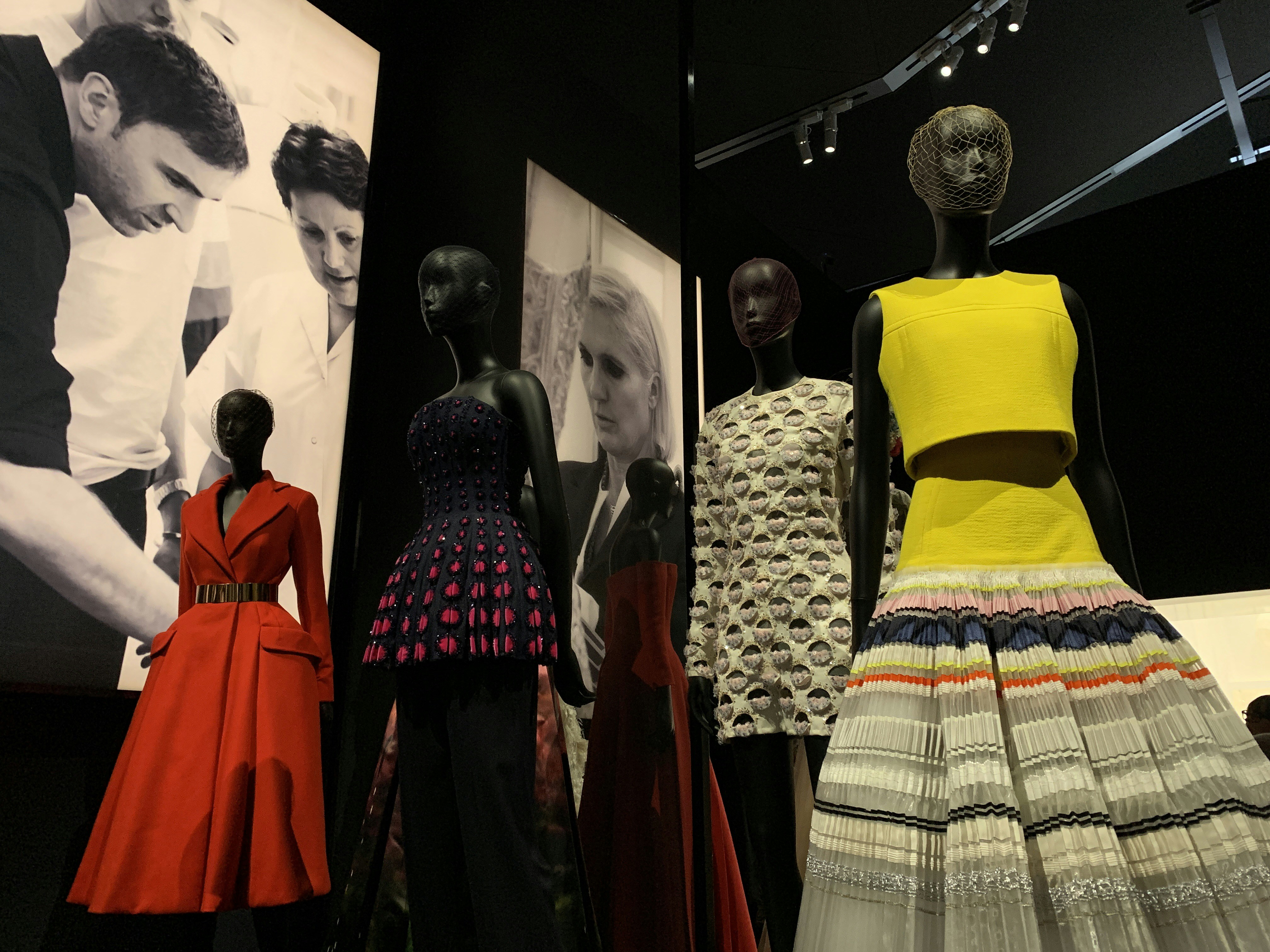
Introduction to Winter Layering
As the winter season approaches, the necessity for effective layering becomes increasingly apparent. Winter layering is not just about piling on clothes; it’s a strategic approach to fashion that ensures optimal warmth while allowing for personal expression. The primary goal of layering is to create a comfortable microclimate that shields the body from cold temperatures, while still conveying a fashionable and chic appearance. This method involves selecting various clothing pieces that can be easily adjusted to accommodate changes in temperature throughout the day.
One of the most significant challenges of winter layering is achieving a balanced silhouette. Many individuals worry that multiple layers will lead to a bulky or unflattering look. However, layering can be executed in a way that enhances one’s figure rather than detracting from it. By understanding the principles of layering, such as choosing garments with different proportions, textiles, and styles, it is possible to maintain both comfort and style. Lightweight materials can serve as base layers, while more structured pieces can be added for an elegant finish.
The art of layering extends beyond mere warmth; it invites creativity and innovation in one’s winter wardrobe. By mixing textures and colors, individuals can curate outfits that are not only functional but also visually captivating. This post will delve into practical tips and stylistic choices that can help anyone refine their winter layering strategy. From essential base layers to statement outerwear, each layer plays a critical role in creating an ensemble that embodies the spirit of winter, emphasizing both practicality and style.
Understanding the Basics of Layering
The art of layering is essential for
, where both style and functionality are key. Layering comprises three fundamental components: the base layer, middle layer, and outer layer, each serving a distinct purpose in terms of insulation, breathability, and protection from the elements.
The base layer is the foundation of any layered outfit. It is designed to be in direct contact with the skin and should effectively wick moisture away from the body. This is crucial as perspiration can lead to discomfort and loss of body heat. Fabrics such as merino wool, polyester, or blends specifically engineered for moisture management are ideal for this layer. By maintaining dryness against the skin, the base layer helps regulate body temperature, ensuring you remain comfortable, even as activity levels change.
Next is the middle layer, which serves primarily for insulation. This layer traps warm air close to the body while allowing moisture to escape. Materials like fleece or down are commonly used for this purpose, providing significant warmth without adding excessive bulk. The thickness and insulation qualities of the middle layer can vary based on the external temperatures and the activity planned. Choosing a versatile middle layer that can be adjusted for different conditions enhances the overall effectiveness of your winter wardrobe.
Lastly, the outer layer acts as the shield against wind, rain, and snow. This layer should be both waterproof and breathable to ensure protection while allowing moisture generated from within to escape. By employing materials such as Gore-Tex or similar technologies, this layer effectively safeguards against harsh weather conditions.
Understanding these basic principles of layering empowers individuals to adapt their wardrobe to meet varying winter challenges while staying stylish and warm. Each layer plays a crucial role in battling the cold, thus contributing to an overall successful winter wardrobe strategy.
Choosing the Right Fabrics
When it comes to mastering winter layering, the selection of fabrics plays a crucial role in achieving both warmth and style without excessive bulk. Understanding the properties of different materials can significantly enhance your layering strategy, allowing you to stay comfortable throughout the colder months. Merino wool is one of the top choices for base layers due to its exceptional moisture-wicking properties and breathability. This lightweight wool not only regulates body temperature but also maintains warmth without feeling heavy. Its softness ensures it sits well against the skin, making it an ideal choice for everyday wear.
For mid-layers, consider technical fabrics such as fleece or insulated synthetics. These materials are designed specifically to trap heat while allowing moisture to escape, thus providing a perfect balance of insulation and comfort. Lightweight fleece jackets and pullovers are especially effective, as they can be easily layered over a merino wool base without adding significant bulk to your outfit. Artificial insulation materials, like Primaloft, are also excellent for maintaining warmth, as they provide high warmth-to-weight ratios, making them perfect for winter activities.
Additionally, moisture-wicking blends should not be overlooked. Fabrics that combine synthetic fibers with natural materials, like bamboo or modal, ensure quick drying capabilities while maintaining a soft, comfortable feel. These blends help to keep layers thin and sleek, which is essential for achieving a polished appearance. Furthermore, opting for water-resistant or windproof outer layers will provide additional protection against harsh winter conditions while allowing the inner layers to maintain their insulating properties. By carefully selecting these fabrics, you can effectively navigate the challenges of winter layering, ensuring both style and warmth in your wardrobe.
Creative Layering Techniques
Layering during the winter months is a crucial skill that can enhance both warmth and style. To achieve a sophisticated look without succumbing to bulkiness, several creative layering techniques can be employed. One effective approach is to focus on color matching. By selecting a cohesive color palette, individuals can create a streamlined appearance that ties all layers together while allowing each piece to contribute to the overall aesthetic. Opt for neutral shades for a classic look or incorporate bold colors as accents to add visual interest.
Mixing textures is another technique that guarantees a stylish outcome. Combining different materials, such as pairing a chunky knit sweater with a sleek, tailored coat, can provide depth and intrigue to an outfit. Textured layers add dimension, making the ensemble more dynamic. Consider incorporating elements like velvet, wool, or denim to achieve a balanced and interesting look. Additionally, the interplay of various fabrics can enhance comfort; breathable layers can keep you warm without excess weight.
Utilizing different lengths and fits adds another layer of sophistication to your winter wardrobe. Experimenting with longer outerwear such as trench coats or cape styles can create a visually appealing silhouette when layered with shorter tops or fitted trousers. Borrowing styles from menswear, such as oversized blazers or long cardigans, can accentuate fitted garments underneath, promoting a polished look. The order in which layers are worn also matters; starting with a fitted base layer, followed by mid-layers, and topped with a statement outer layer can ensure a flattering and functional ensemble.
Incorporating these techniques enables individuals to master the art of winter layering effectively. By focusing on color, texture, length, and fit, one can achieve a tailored and stylish appearance, ensuring that staying warm does not come at the cost of looking fashionable.
Accessorizing for Balance
When it comes to mastering winter layering, accessories play a crucial role in completing an outfit while ensuring both style and functionality. The right selection of scarves, hats, and gloves adds not only warmth but also distinctiveness to layered ensembles. By carefully choosing accessories that complement the layers beneath, individuals can achieve a well-balanced look that avoids a cumbersome appearance.
A scarf is a versatile accessory that can elevate a winter outfit dramatically. It serves as an ideal tool for layering, capable of bringing together various textures and colors of clothing. Opting for a chunky knit scarf can add visual interest and depth, while a lightweight silk scarf can serve as a sophisticated finishing touch. Additionally, scarves can be styled in numerous ways, thus allowing one to effortlessly transition from a casual outing to a more formal setting. When wrapped around the neck or draped over the shoulders, a scarf can also help to maintain warmth, striking a balance between practicality and fashion.
Hats are another essential accessory that can harmonize an outfit by adding a focal point. Whether choosing a beanie, fedora, or wide-brimmed hat, the right headwear not only provides warmth but also enhances the overall silhouette of an outfit. A well-chosen hat can draw attention to the face, bring out personal style, and keep the look cohesive, especially when it aligns harmoniously with other elements of layering.
Lastly, gloves serve dual purposes; they offer protection against cold temperatures while providing an opportunity for personal expression. From stylish leather gloves to cozy knitted options, selecting gloves that resonate with the outfit ensures continuity throughout the layered look. With a thoughtful approach to accessories, one can achieve an aesthetic that is both polished and practical during the winter months.
The Importance of Fit
When it comes to mastering winter layering, the significance of fit cannot be overstated. A well-fitted garment is essential in creating a streamlined appearance, allowing individuals to stay stylish and warm without feeling bulky. Layering for the winter often involves multiple pieces, making it crucial to select items that complement one another both in style and fit.
Properly tailored garments help achieve a cohesive silhouette, enhancing the body’s natural shape rather than obscuring it. For instance, opting for a fitted base layer can provide a smooth foundation upon which to build additional layers. This ensures that each piece fits snugly against the body, preventing excess fabric from causing a cumbersome look. Additionally, consider investing in tailored outerwear; a well-structured coat can pull together layered ensembles while maintaining an elegant silhouette.
Furthermore, the importance of fit extends to the proportion of each layer. While layering can be a method to add depth and interest to an outfit, it is vital to balance the dimensions of each layer. For example, pairing a form-fitting turtleneck with a slightly looser sweater allows for both comfort and style, creating a visually appealing contrast that doesn’t overwhelm the frame. This intentional layering approach ensures that the overall look remains sophisticated and deliberate.
Choosing the right size is equally important; oversized clothing can lead to a frumpy appearance, while overly tight items may restrict movement. Therefore, when selecting winter layers, prioritize garments that offer a comfortable yet tailored fit. Ultimately, focusing on fit not only contributes to a more polished appearance but also enhances the wearer’s confidence during the colder months.
Layering for Different Occasions
Layering is an essential skill for maintaining both warmth and style during the winter months. This approach to dressing allows individuals to adapt their outfits for various occasions, ensuring comfort while meeting the dress code requirements. In this section, we will explore how to effectively layer outfits for three distinct settings: work, casual outings, and formal events.
For a professional setting, it’s crucial to maintain a polished appearance while still prioritizing warmth. Start with a base layer such as a thin turtleneck or a fitted long-sleeve shirt, which can be worn under a tailored blazer. Opt for wool or cashmere sweaters as the middle layer for added insulation. Completing the outfit, choose tailored trousers paired with knee-high boots to maintain a sophisticated look. Accessories like a structured scarf or leather gloves can further enhance the ensemble without sacrificing professionalism.
When it comes to casual outings, layering opens up a world of possibilities. A comfortable yet trendy look can easily be achieved by wearing a graphic tee as a base layer and adding an oversized flannel shirt or denim jacket on top. For colder temperatures, introduce a lightweight puffer vest as the outer layer that provides both warmth and a contemporary touch. Pair this combination with high-waisted jeans and chunky sneakers for a chic, laid-back aesthetic. Accessories such as knit beanies or crossbody bags can add a pop of color and personality.
For formal events, mastering the art of layering can elevate your style while keeping you warm. Consider wearing a sleek slip dress over a fitted long-sleeve top. Incorporate an elegant cardigan or tailored coat to bring sophistication to the look. Choose heeled boots to enhance your ensemble further, along with statement jewelry, which adds a touch of glamour. This allows you to celebrate an inviting appearance without sacrificing warmth, making you feel comfortable at any event.
Mistakes to Avoid When Layering
When it comes to mastering winter layering, several common pitfalls can compromise both style and comfort. One prevalent mistake is the use of excessively bulky fabrics. While chunkiness may seem appealing for warmth, an overabundance of such materials can lead to a cumbersome appearance, making it difficult to achieve a sleek silhouette. Instead, opt for lightweight base layers that effectively trap heat without adding unnecessary bulk. Fabrics such as merino wool or thermal blends are excellent choices that provide warmth while maintaining a streamlined look.
Another frequent layering misstep is neglecting the balance of proportions. It’s crucial to create harmony among the layers worn together; a voluminous outer layer should typically be balanced with a more fitted base layer. For instance, pairing a thick, oversized coat with a loose sweater can overwhelm your frame. Instead, consider integrating a fitted turtleneck or a tailored shirt underneath larger outerwear, which will create a visually appealing proportion and enhance your overall shape.
Additionally, many individuals overlook the importance of color coordination. A common layering mistake is combining clashing colors that disrupt the outfit’s cohesion. A cohesive color palette not only elevates the overall look but also helps ensure that various layers complement rather than compete with each other. Sticking to a few key colors and layering shades of the same hue can create a sophisticated and polished appearance.
Lastly, pay attention to the functionality of your layers. Selecting non-functional items, such as accessories that hinder movement, is a common oversight. Ensure that all components of your layered outfit are practical, allowing you to stay both warm and mobile. By avoiding these common layering mistakes, you can enhance your winter wardrobe and remain stylish throughout the season.
Conclusion and Final Tips
As we embrace the winter season of 2025, mastering the art of layering becomes essential for achieving both style and warmth. Throughout this blog post, we explored various strategies and techniques designed to maximize comfort while enhancing your overall appearance. Understanding the foundational principles of layering, such as selecting appropriate base layers, mid-layers, and outerwear, allows individuals to adapt their outfits to changing temperatures without sacrificing style.
One of the primary takeaways is the importance of choosing breathable materials for base layers. Fabrics such as merino wool, moisture-wicking synthetics, and even lightweight cotton can help maintain body heat while allowing sweat to escape, keeping you warm and comfortable. Mid-layers, including cardigans and pullovers, serve as versatile additions that can be easily adjusted to suit both indoor and outdoor settings. Outer layers must not only offer protection from the elements but also complement your overall look. Prioritizing both functionality and aesthetic appeal in outerwear choices can significantly elevate an ensemble.
Moreover, accessorizing plays a pivotal role in enhancing your layered outfits. Incorporating stylish scarves, hats, and gloves not only adds warmth but also introduces texture and color, making your winter wardrobe more dynamic. Footwear choices, such as insulated boots or chic ankle boots, are equally important in completing your stylish layered look while ensuring adequate warmth and comfort.
We encourage readers to explore various layering styles, personalizing them to match individual preferences and lifestyles. Experimenting with different textures, colors, and accessories will undoubtedly yield unique outfits that express your personal style while keeping you cozy. Mastering winter layering is about blending functionality with creativity; thus, your winter wardrobe should reflect confidence and flair as you navigate the colder months.


